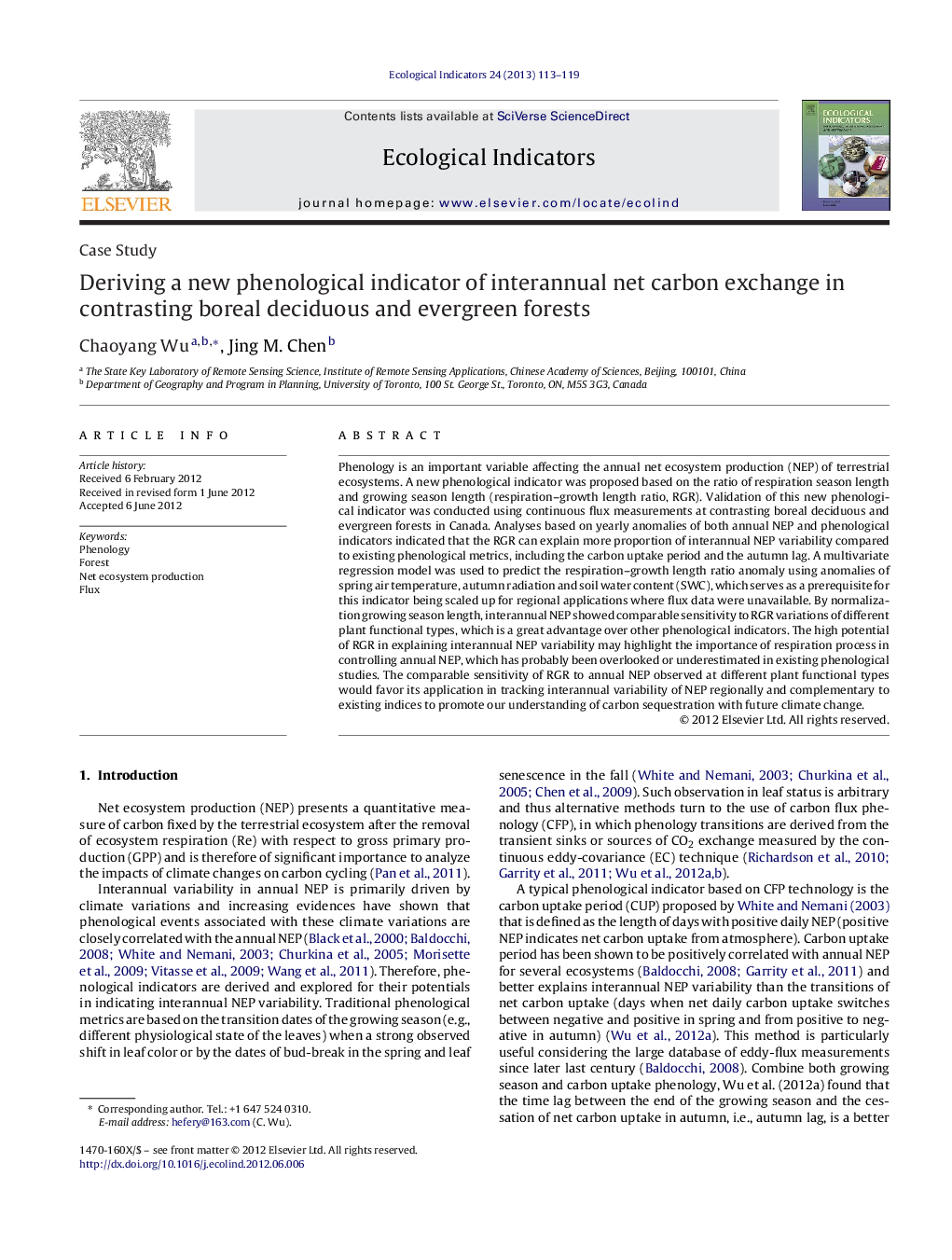| Article ID | Journal | Published Year | Pages | File Type |
|---|---|---|---|---|
| 4373627 | Ecological Indicators | 2013 | 7 Pages |
Phenology is an important variable affecting the annual net ecosystem production (NEP) of terrestrial ecosystems. A new phenological indicator was proposed based on the ratio of respiration season length and growing season length (respiration–growth length ratio, RGR). Validation of this new phenological indicator was conducted using continuous flux measurements at contrasting boreal deciduous and evergreen forests in Canada. Analyses based on yearly anomalies of both annual NEP and phenological indicators indicated that the RGR can explain more proportion of interannual NEP variability compared to existing phenological metrics, including the carbon uptake period and the autumn lag. A multivariate regression model was used to predict the respiration–growth length ratio anomaly using anomalies of spring air temperature, autumn radiation and soil water content (SWC), which serves as a prerequisite for this indicator being scaled up for regional applications where flux data were unavailable. By normalization growing season length, interannual NEP showed comparable sensitivity to RGR variations of different plant functional types, which is a great advantage over other phenological indicators. The high potential of RGR in explaining interannual NEP variability may highlight the importance of respiration process in controlling annual NEP, which has probably been overlooked or underestimated in existing phenological studies. The comparable sensitivity of RGR to annual NEP observed at different plant functional types would favor its application in tracking interannual variability of NEP regionally and complementary to existing indices to promote our understanding of carbon sequestration with future climate change.
